How To Start a Garden From Scratch in 10 Steps
If you are currently wondering “Why should I start to garden or landscape?” The real question at hand should be, why shouldn’t you garden? Gardening has proven to help with one’s mental and physical health, not to mention how amazing it is for the environment. So today I’m sharing how to start a garden from scratch in 10 steps! Perfect for beginner gardeners who want to start a flower or vegetable garden. Or both!
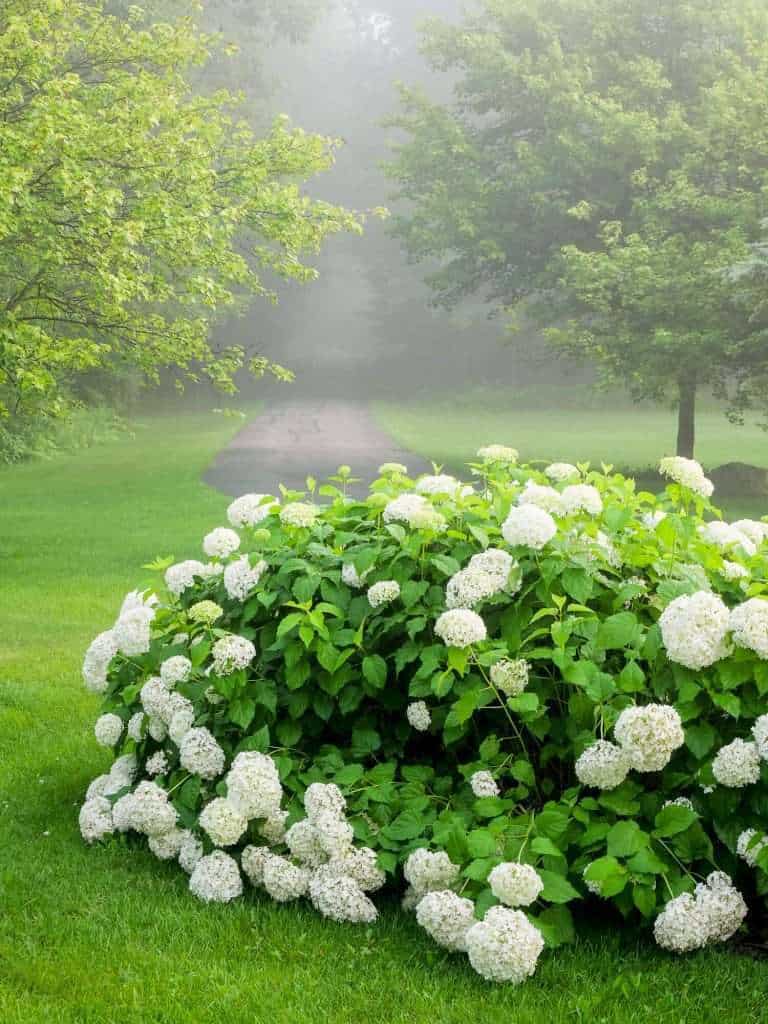
I am excited to share with you how I began my gardening journey, tips to start, my personal gardening secrets, and most importantly, the why.
So let’s dive into it!

Post may contain affiliate links where I earn a small commission on your purchases at no cost to you.
Why Should I Start A Garden?
Gardening Is Good For Your Mind And Body
Besides obvious weight loss benefits, gardening has been proven to reduce stress, lower blood pressure, lower cholesterol, and decrease depression.

Some research even shows that merely looking at a garden can generate changes in such things as blood pressure, heart activity, and muscle tension. Gardening is so much more than a feel good pastime; it has evolved into a form of therapy that has the potential to fuel our body and soul.

Full disclosure: When I started my first garden, it was stressful. But that is because I had no idea what I was doing! I didn’t do any research ahead of time. And the result was that I learned the hard way, which you can see chronicled here.

Had I known the things I will be sharing today, it would have been a much more enjoyable start! Now, I know what to pay attention to to have a successful garden, and truly enjoy working in it daily.
If you’d like to see more of my garden, you can also make sure to check out my garden and 38 acre property tour on YouTube!
Impact The Environment
Through gardening we can truly make efforts to benefit the earth. Plants act as highly effective air cleaners, absorbing carbon dioxide, plus many air pollutants, while releasing clean oxygen and fragrance.
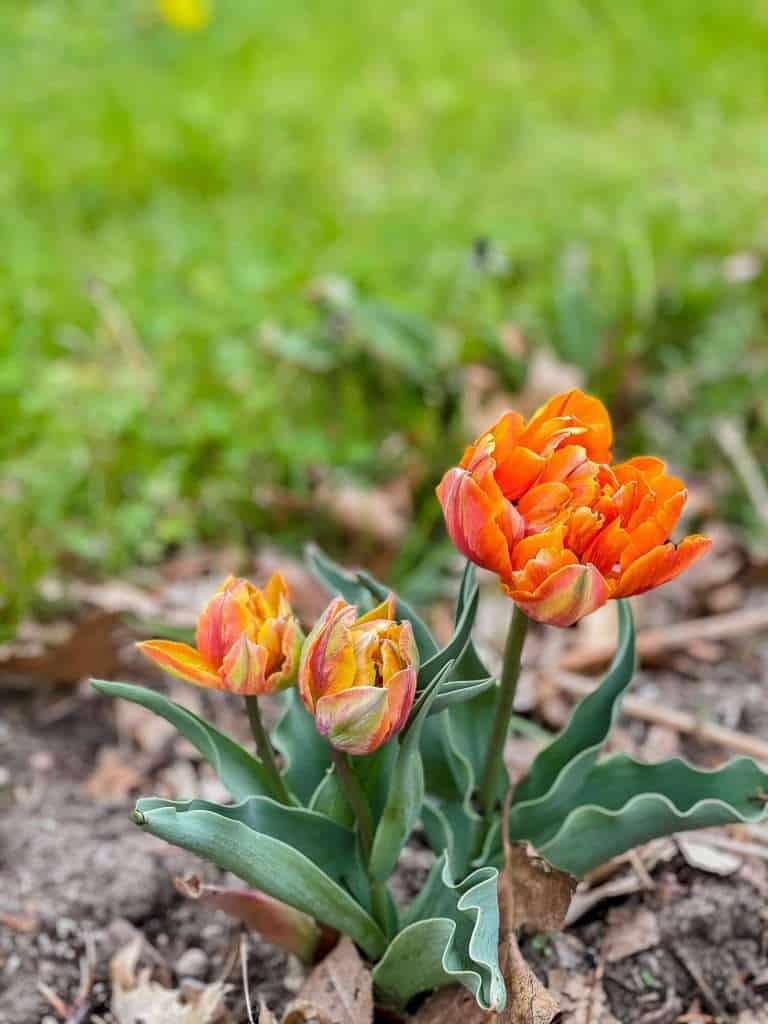
Also, a dense cover of plants and mulch holds soil in place, reducing erosion and keeping sediment out of streams, storm drains and roads. These are only a few of many ways that gardening can benefit creation!
Increase Property Value
A beautiful garden or landscaping design can be considered an investment for the future. A well designed yard can add “curb-appeal” to your house and increase the overall value of the home.

Besides adding monetary value, a garden can potentially help someone sell their house faster than the average homeowner. Plus, it just looks pretty. 😉
Growing And Eating Green
A vegetable garden will ensure the freshness and quality of what you are eating. In this day and age where pesticides and fertilizers are overused, it is important to consider the comfort you will have when you know exactly what has touched your fruits and veggies.

Gardening is a great way to gain responsibility and personal satisfaction. Now, let’s get to how to start a garden from scratch!
How To Start A Garden From Scratch In 10 Easy Steps
How do you start a garden for beginners?
All 10 steps I’m sharing today will get you started in your garden. Whether you are starting a flower garden or a vegetable garden, the steps are much the same. I hope this is so helpful to you as a beginner gardener!

Best Garden Tools for Beginners
As you plan your garden, make sure to be prepared with all the proper tools. Watch this quick video where I explain all the necessary tools for gardening. Then, head to my Best Garden Tool roundup to pick up the essentials!
1. Consider What to Plant
Do you want to plant a vegetable garden? An herb garden? A flower garden? If you choose vegetables and herbs for their contributions to your dinner table and environment, plant ones your family will eat or want to try. Otherwise you will have a lot of produce to give away.
Also, consider how much your family needs. If you aren’t ready to learn how to can/preserve or desire to freeze your bounty, then only plant as much as you need to feed your family without an overabundance.

If you want flowers, decide whether you want annuals, which bloom most of the summer but need to be replanted each spring. Or perennials, which have a shorter bloom time but return year after year.
Whatever you decide on will make for a stunning garden! However, what you plant will have different maintenance requirements. Plus, you rebuy annuals yearly rather than buying a perennial once and done.
I would suggest starting small your first year so the work does not become overwhelming. Remember, this is supposed to be fun!
2. Pick the Best Garden Spot
Many vegetables and flowering plants need around 6-8 hours of full sun each day. Before you plant anything, you will need to observe your yard throughout the day to figure out which spots receive full sun versus partial sun or shade.
Don’t worry if your yard is mostly shady. You won’t be able to grow most vegetables in shade, but many other flowering plants like hostas and outdoor ferns will do great.

When you are buying plants you can check plant tags, or ask the staff at your local garden center, to help you understand how much sun a plant needs.
Relatively flat spots will work well for your garden but that is more so for your sake than the plants.
You can also plant in raised beds or on terraced levels.
Learn how to make easy DIY raised beds in this post!
3. Clear the Ground
Start by getting rid of weeds and sod in the area you plan to plant.
Removing weeds and sod is vital to lay the foundation for plants that can grow healthily without competition for water and nutrients.

If you want quick results, start in the fall and map it out.
Slice under the sod with a spade, cut the sod into sections, remove, then put in your compost pile to decompose. Next, spread a 3-inch layer of compost (or combination of potting soil and topsoil). If you start in the fall, by spring you’ll have a bed ready to plant with no grass or weeds and plenty of rich soil.
4. Test and Improve Your Soil
To learn more about your soil, have a soil test done. For this you simpply need to contact a local extension office. Whoever comes out will lead you through the procedure: how much soil to send from which parts of the garden and the best time to obtain samples.
Residential soil almost always needs a boost, because the topsoil may have been stripped away.
Adding nutrient-rich organic material back into your soil will give your plants proper nutrition.
5. Prepare Your Planting Beds
Loosening the soil in new beds before sowing or planting helps roots to grow more easily because they will have access to the nutrients they need.
Then, work the soil only when it’s moist. Do not dig when the soil is too dry because it is harder work, and you can damage the soil structure.

If you are working in a small area, you can start a garden from scratch with a stiff rake to break up the soil for planting. If you are starting a large garden, you may want to invest in a rototiller and break up the ground on the shallowest level.
As you prepare your flower beds, consider doing some extra prep work to make them as low maintenance as possible. You can check out these 15 Tactics for Low Maintenance Flower Beds to get you started!
6. Pick Your Plants
Some people pore over catalogs for months; others head to the garden center and buy what wows them. Either method works as long as you choose plants adapted to your climate, soil, and sunlight.
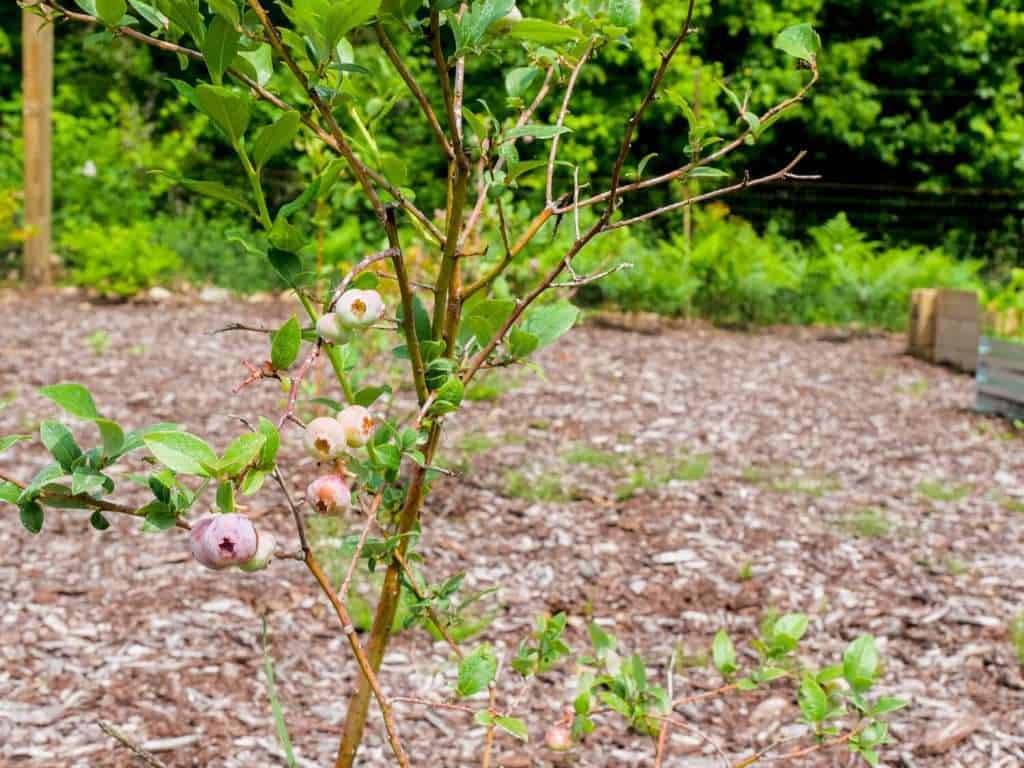
Easy-to-grow plants for beginners:
- Annuals:
- calendula
- cosmos
- geraniums
- impatiens
- marigolds
- sunflowers
- zinnias
- boston ferns (in mild climates)
- prepared hanging baskets
- Perennials:
- black-eyed Susans
- day lilies
- lamb’s ear
- pansies
- phlox
- coneflowers
- Russian sage
- cone hydrangeas
- boxwood and other shrubs
- ground cover
- sedum
- hostas
- Vegetables:
- cucumbers
- lettuce
- peppers
- tomatoes
- green beans
- carrots
- zucchini
How to Start a Garden From Scratch For Baby Beginners
If you are a baby beginner gardener, consider starting with potted herbs. Herbs are a great beginner gardening option that can be grown even on a patio.

Some of my favorite herbs to grow in pots are:
- Basil
- Oregano
- Dill
- Rosemary
- Thyme
- Cilantro
- Parsley
- Chives
Consider Companion Planting
One of the things you should consider when picking your plants is companion planting. Planting certain plants and vegetables next to each other can be beneficial for plant health.

For example, many people plant marigolds around their vegetable garden because deer don’t like them. This helps their vegetables have a fighting chance for growth.
Other plants work symbiotically to benefit each other. You can find a great resource for companion planting here.
Plant Flowers for the Seasons
Another thing to consider as you choose your plants is when they will bloom. Perennial flowers bloom at different intervals from spring to fall.
So, as you’re choosing, make sure to buy equally for spring, summer and fall bloomers. This way you can enjoy blooms all season long during the warmer months!
7. Start Planting
Some plants, such as pansies and kale, tolerate cold, so you can plant them in autumn or late winter. Vegetables and most annual flowers, on the other hand, prefer warm temperatures, so don’t plant them until the danger of frost has passed in your area.
Always make sure to read the seed packet for information about planting time, depth, and spacing.
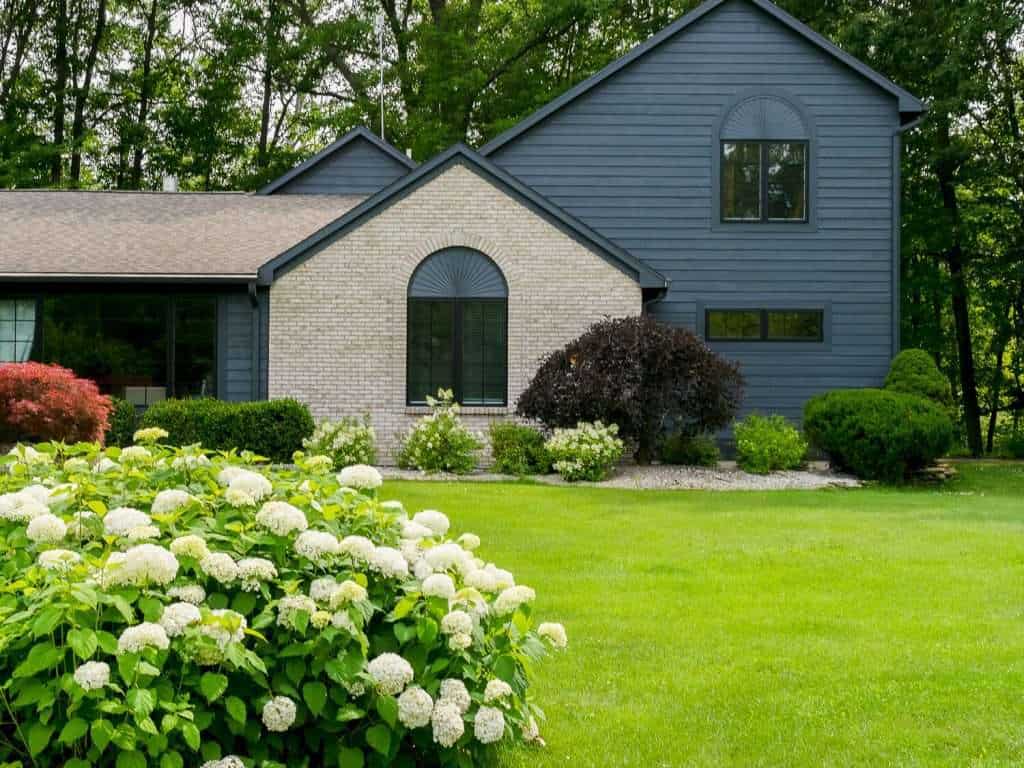
Also take into consideration if you can start your plants indoors. Many seeds can be sown indoors to give your crop a head start. Establishing plants inside will benefit you especially if you live in a climate with a short growing season.
Avoid starting root vegetables inside, like beets and carrots, or other large crops like corn. These vegetables will not thrive being started in shallow soil.
8. Water at the Right Time & In the Right Way
Seedlings should never be allowed to dry out, so water daily. Another helpful tip is to feel the soil 3-4 inches below the surface. If it feels dry, it’s time to water. Water slowly and deeply, so it soaks in instead of running off.
Mornings are also the best time to water. This allows the water to soak in rather than evaporate in the heat of the day. It also gives the soil time to dry out before darkness sets in, which helps keep roots healthy to avoid over saturation.
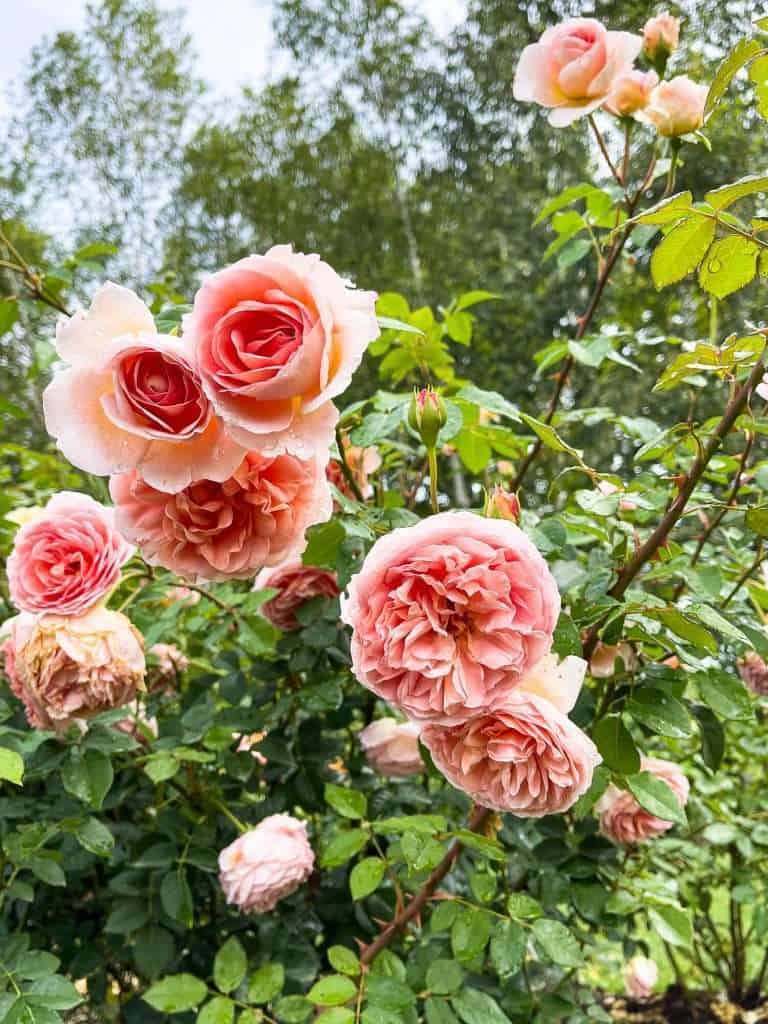
Also, take note on how your plants like to take water. Some plants, such as tomatoes and roses, do best when watered at the base of the plant. Avoid getting water on the leaves as that can lead to blight and disease.
9. Protect Your Garden With Mulch
To help keep weeds out and moisture in, cover the soil with a couple of inches of mulch. You won’t have to water as often, and by preventing sunlight from hitting the soil, you’ll prevent weed seeds from germinating.
Plus, mulch makes a garden look extra aesthetically pleasing!

Ensure that you keep mulch away from the canes of roses and the base of most plants as that can lead to disease and pest issues.
Using Weed Barrier
I also like to use weed barrier where I’m able. In the flower garden, I use heavy duty weed barrier to keep my weeding down.
However, in the vegetable garden, it is more difficult to use weed barrier and allow the crops to come up without restriction. In our asparagus bed, I lay cardboard for a weed barrier between plants.

Cardboard, or newspaper, are both excellent weed barriers that are able to decompose over time.
10. Maintain Your Garden Regularly
As your garden begins to grow, help it reach its full potential by keeping up with garden chores. Water the plants before they wilt, pull weeds before they go to seed, and get rid of dead, dying, and diseased vegetation.
You can remove destructive insects by picking them off the plant and dropping them into a cup of sudsy water. Also, harvest vegetables as soon as they’re ready.
Your journey will not look like everyone else’s, so remember to be kind to yourself and garden. Also, if this is your first time learning how to start a garden from scratch, do not be afraid to fail! It happens and there is always next year.

However, if you follow even some of the advice above or from your other gardening friends, you will be successful and have plants in no time.
What Vegetables To Plant In August
Some good examples of plants you can start growing in Michigan or in similar climates in late summer include:
- Carrots
- Radishes
- Beets
- Kale
- Collards and a variety of lettuce
For more advice on how to garden, I’m sure you’ll find this resource helpful: Michigan State University’s Extension Program’s Garden Calendar. They have more information on when to plant certain vegetables, how to plant, and why.
Stay Connected
I am so happy to be able to share my love of gardening with the Grace In My Space community. Over my life, gardens have provided my family with fresh food, rewarding harvest, and lifelong beauty and memories.
My hope is that this post will not only help you start your garden from scratch, but allow it and you to flourish in the process.
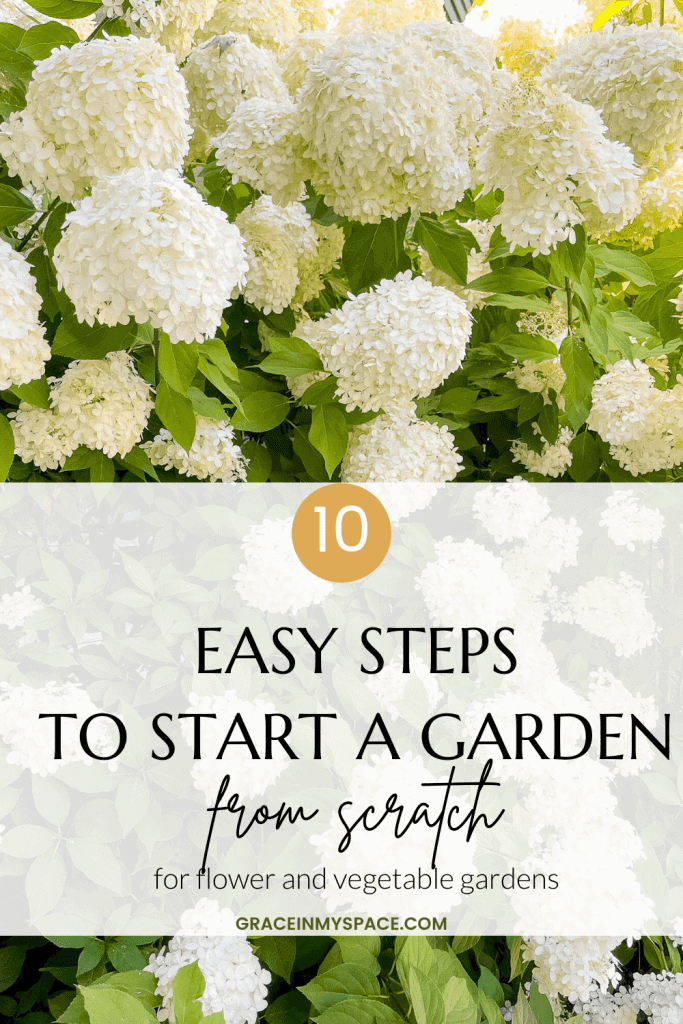
Please comment below with any gardening advice for me or beginners! And, if you found this post helpful, make sure to share it and Pin it for later!
Thanks for stopping by the blog today! You can also follow along with me daily on Instagram and weekly on YouTube!





I have 3 littles and have been wanting to start Garden for a couple years now and I’m thinking I’ll actually do it this spring! I get the itch around February and can hardly wait to start! I’m in Michigan too so it’s hard to be patient especially with the crazy weather lately! I’m hoping I can put your tips to use soon!
Hi Sarah! Your garden with 38 acre property is nice. I want to be a gardener. As a beginner your blog helps me a lot. Thanks for sharing.
this is very beauteful blog .learned so many things
I’m a beginner for sure!
We have a lot of cats in our
neighborhood. How do we
deter them from using
our garden as a litter box?
Thanks
Avanna Shea
Really appreciate your thoughts and are very helpful for the reader thanks for share.
Thanks for stopping by!
Your land is so pretty! And it’s easy to see all the hard work y’all have put into it. Here in TX, we have hard, clay soil. A friend gave me a tip years ago that has worked well in preparing a new garden area. But, you have to be patient as it takes time. I start this process in September/October. Mark out your bed space. We are taking out tree rings the previous homeowner built around trees several years ago, and now the trees are suffering for it. These stones will be our border for the new vegetable garden. Right on top of the grass, lay newspaper. It must be printed with soy ink, which most newspapers are these days. Lay the paper 3 or 4 pages thick. Soak it well. Add 2 to 3 inches of mulch. If there is little moisture over the fall and winter, soak it down from time to time. In the spring when you are ready to plant, move the mulch and that soil can be turned with a fork. I always move the mulch and add compost, then use fresh mulch after my flowers/vegetables are planted. This method has been one of the easiest I have tried, but like I said, it takes patience and planning ahead of time.
Thank you for sharing! That sounds like a great method.
I appreciate this tip! We are new to Texas and you’re right, the soil is hard and clay like! (I’m used to Michigan soil!) I may just have to try your suggestion next fall. Sarah, I have enjoyed watching your home and property bloom (literally) over the past several years! Thank you for blogging- you have a gift 🙂 Blessings as you prepare your garden for this year!
Thank you so much! So glad to have you here!
Would love to get out and spend some time in the garden. What an inspiration.
Yes! It’s a wonderful hobby to enjoy.
It is more challenging to employ a weed barrier in a vegetable garden and enable the crops to grow freely. I used cardboard as a weed barrier between plants in our asparagus garden.